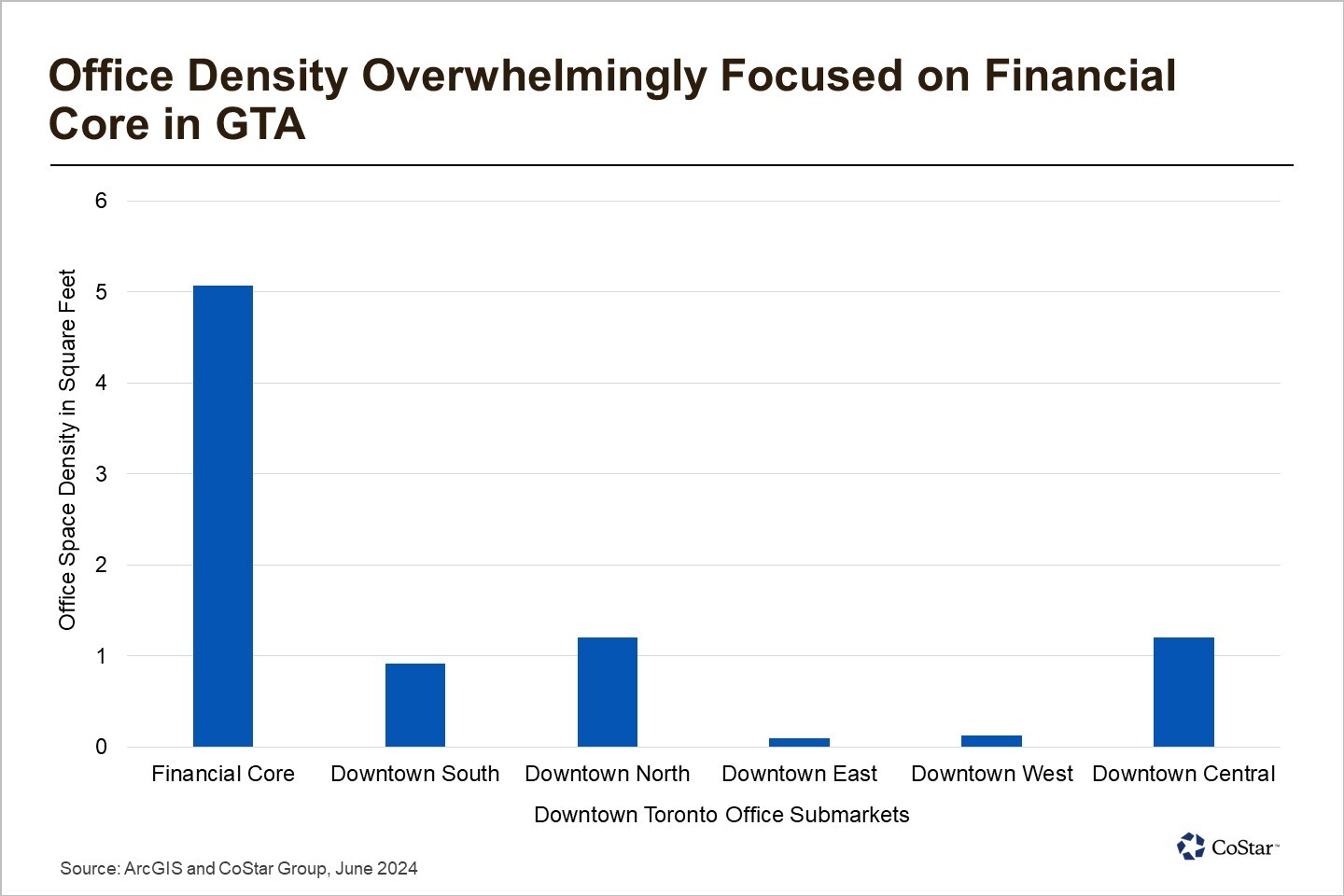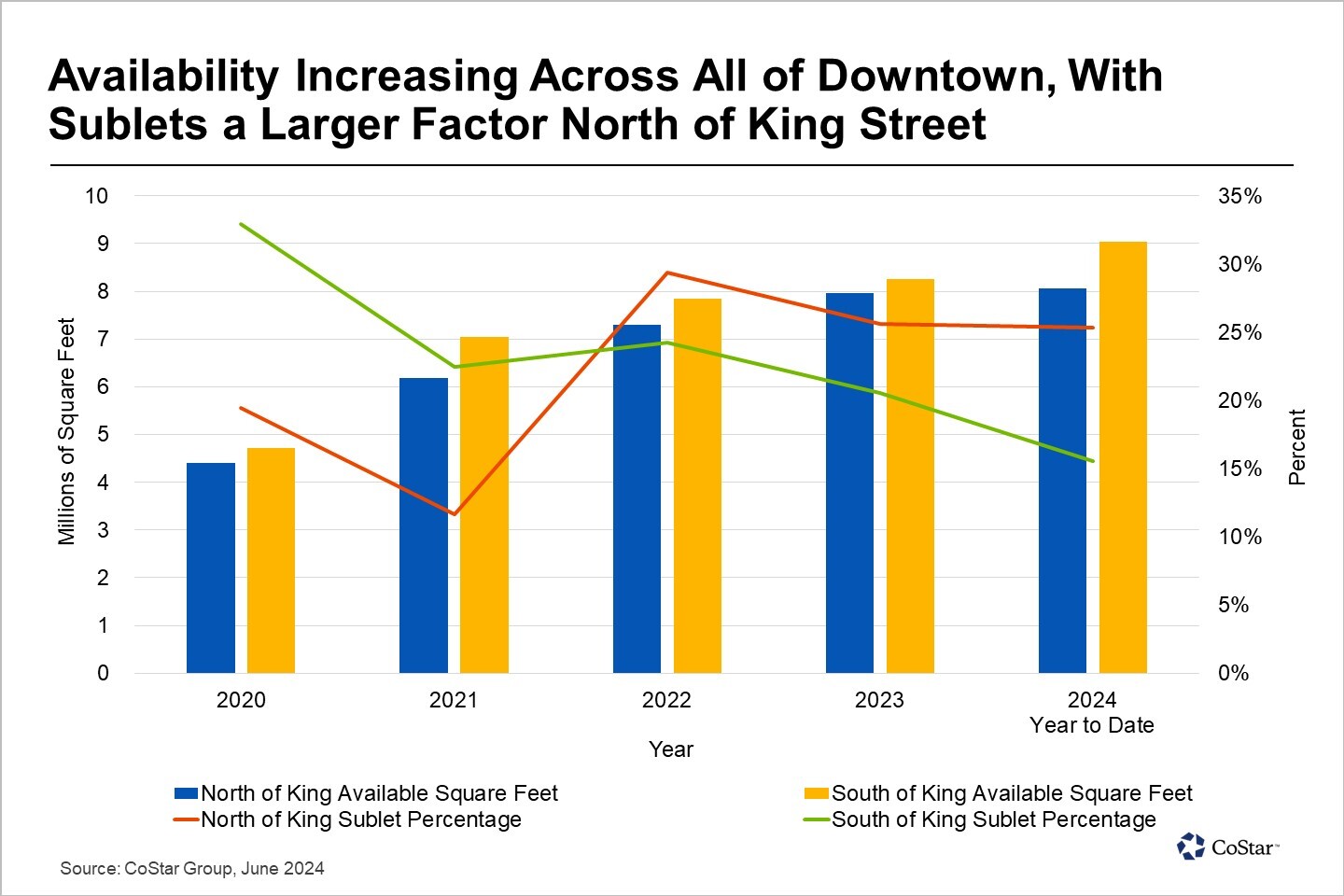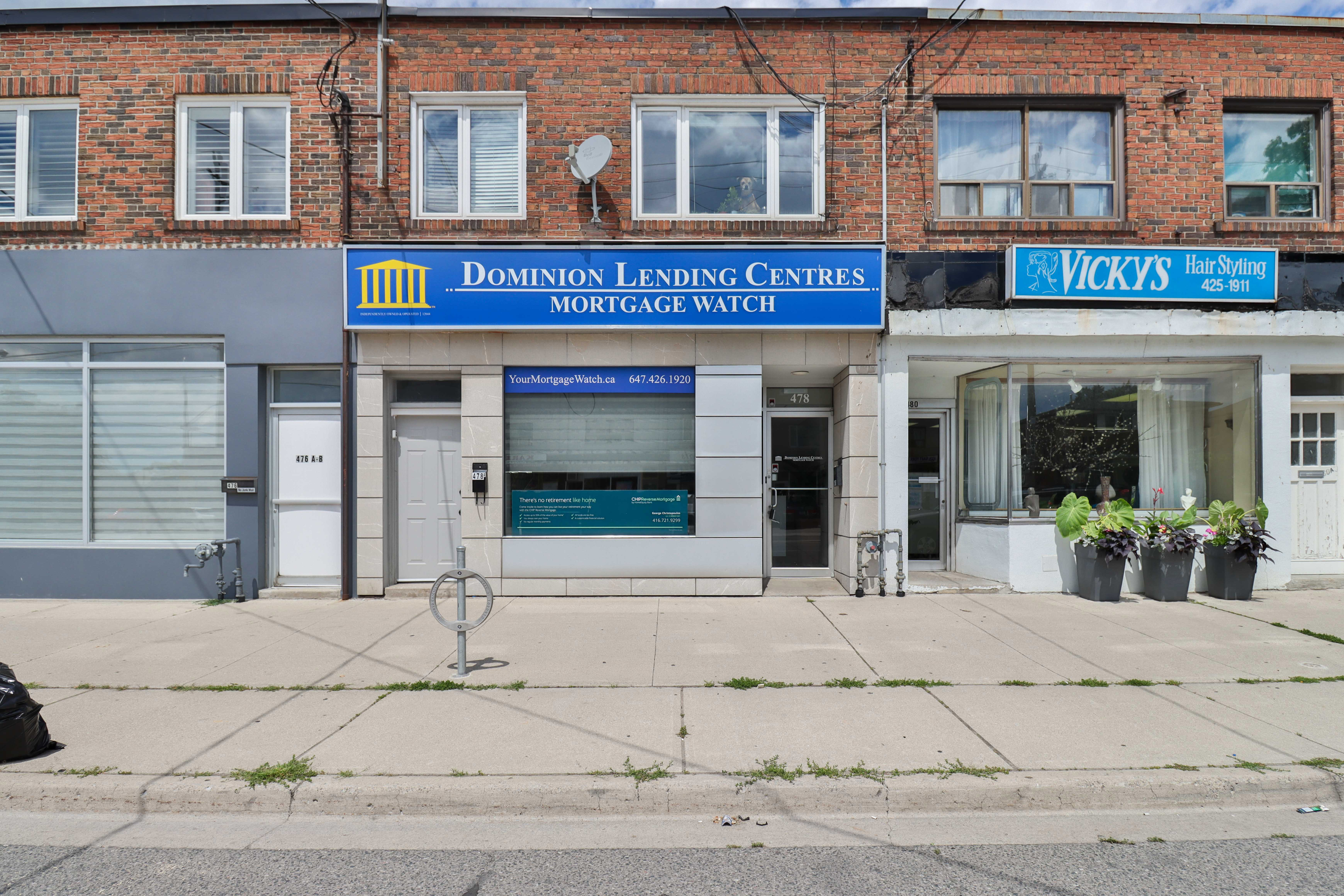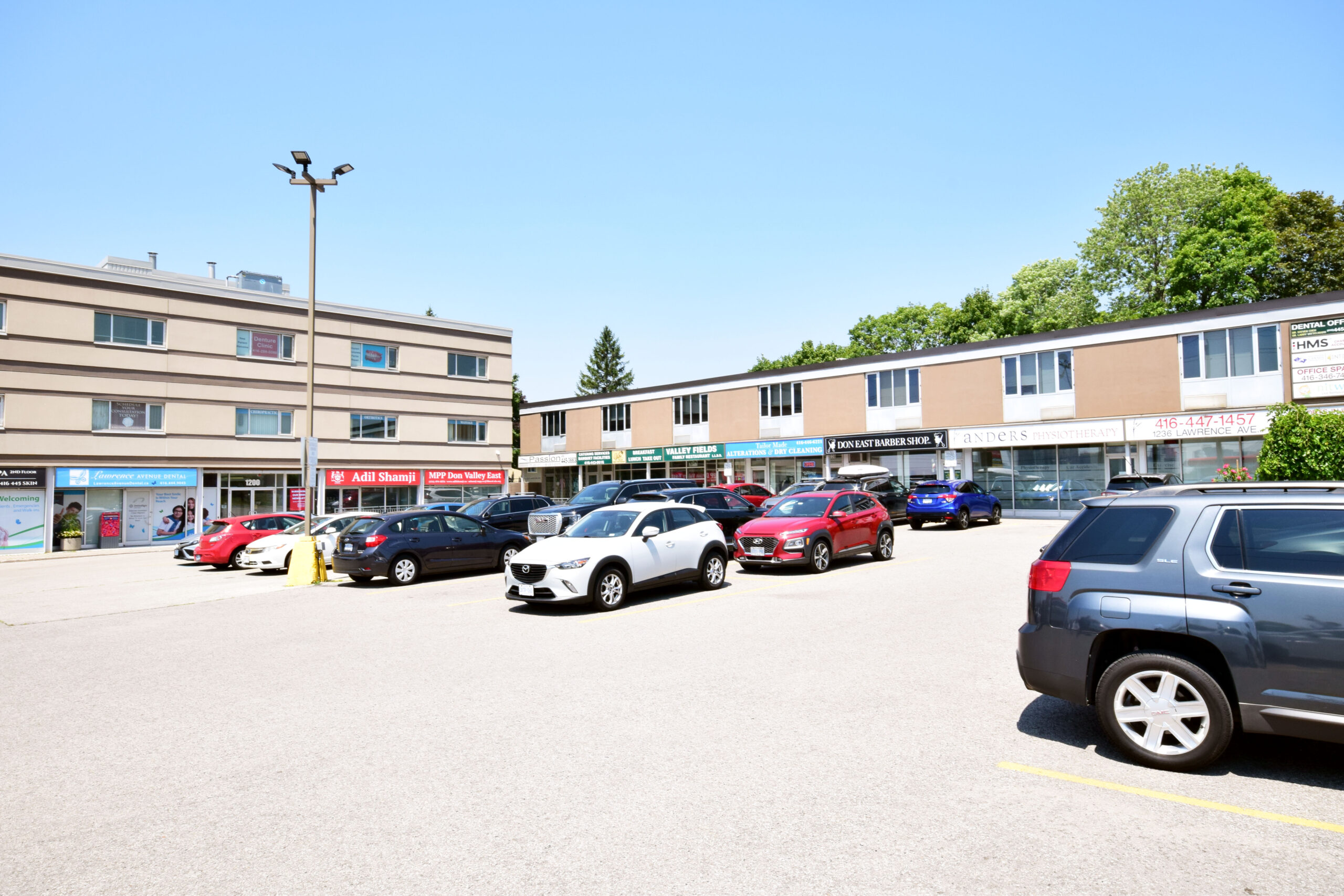Toronto’s Financial Core Appears to Be Shifting South

Toronto’s Financial Core Appears to Be Shifting South
Congestion and Office Tenants’ Priorities Driving Push
Based on an analysis of commercial real estate deals, it looks like the financial heart of Canada’s biggest city may be edging south.
Toronto’s financial core has traditionally been located between John and Church streets to the east and west and between Queen and Front streets to the north and south. At the heart of this downtown area is the Toronto Stock Exchange, and scattered throughout are the trophy assets of national and international banks that have shaped Toronto’s iconic skyline. The area boasts the highest density of office space among all of Toronto’s downtown submarkets by a long stretch, if not in all of Canada.

Historically, this density had been supported by the high demand levels for space in the city leading up to the pandemic. Toronto is one of North America’s top 10 financial centres and is the fifth largest tech services center. This diversity has generally hedged occupier demand and resulted in less volatility than other major markets that may be comparatively pigeonholed and dependent on a single sector such as tech in San Francisco.
In contrast, Toronto’s dense diversity underpinned investor demand and development feasibility. The financial core’s liquidity was well represented by the owner of the Zara retail chain, Amancio Ortega’s purchase of RBC Plaza for $1.2 billion in 2022, notwithstanding pandemic concerns.
However, since that major transaction, the financial core has seen negligible deal activity. Leasing has been similarly subdued, with net absorption averaging less than 103,000 square feet quarterly since the beginning of 2020, compared with an average of approximately 138,000 square feet over the trailing five years.
Interestingly, it appears that absorption, which measures the net change in occupancy, is increasingly bifurcated on a north-south divide. Downtown, south of King St. has seen positive absorption of approximately 184,000 square feet per quarter, compared with approximately 217,000 square feet of negative absorption when looking at the north of King in the downtown area.
Furthermore, while office availability has increased in both directions, the proportion of space available through the sublet market has continued to increase to the north and decreased to the south, inferring that SoK office occupiers are happier with their space and the associated lease agreements than those in NoK.

The trajectory of office availability, in both SoK and NoK, may indicate a general exodus of space. However, there are some large deals that back up that idea that the financial core may be edging to the south.
CPP’s upcoming move from 1 Queen St. to CIBC Square complex under construction at 141 Bay St., adjacent to Union Station, is one of these. Furthermore, TD’s occupation of 160 Front St. also lends itself to this narrative, although this lease was signed in 2019, so it may not wholly align with the pre- vs post-pandemic theme.
Traffic Congestion Making an Impact
In a post-pandemic world of increased traffic congestion and hybrid work, close proximity to commercial peers is proving to be a less valuable proposition than a streamlined commute for staff. This has been further exacerbated by the recent construction work on the Gardiner Expressway, which began earlier this year and is slated to continue for the next three.
A recent study by Geotab showed that travel times have increased by 250% during morning rush hour since the construction work commenced. It has also affected the roads around the Gardiner, with the main alternate routes seeing a 43% increase.
It appears that a driver of this comparative demand for space in the south core is the ease of access to the Gardiner and Union Station, particularly when considering the connection to the PATH and what that offers in Toronto’s colder (and even hotter) months.
Most Toronto commuters will confirm that getting onto the Gardiner can be half the battle, notwithstanding the gridlock they may then have to face.
The often-cited ‘flight to quality’ could be more aptly labeled a ‘flight to accessibility.’ Just like Canada’s geese, the country’s banks and pension funds may discover that their path leads southward.
Source CoStar. Click here to read a full story.
You must be logged in to post a comment












